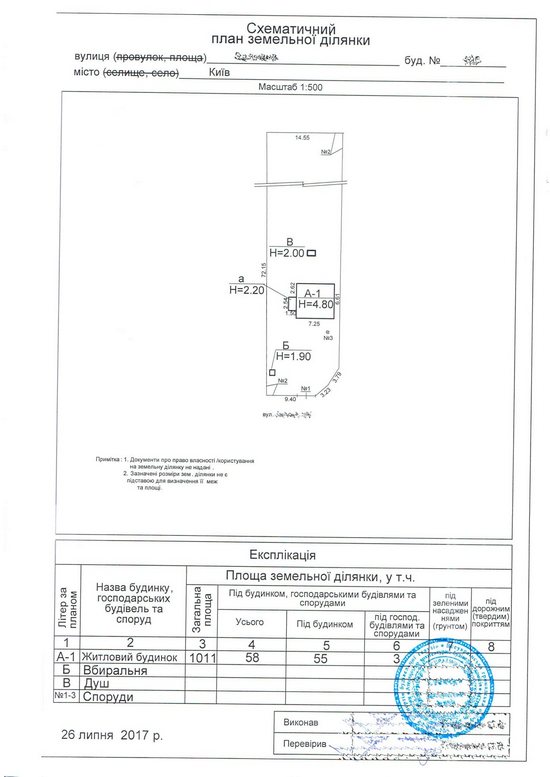Technical passport for the house in Ukraine
One of the most important documents for housing is a technical passport. A technical passport for a house is a document that contains basic information about the real estate object. The technical passport contains the following characteristics of the house:
- location (address) of the object;
- composition;
- technical characteristics;
- plan and description of the object;
- name of the owner/customer;
- information on the ownership of the real estate object;
- information about the business entity that issued the technical passport.
In particular, the year of construction and the material of the foundation, walls and ceilings, the number of floors, height, size of rooms and non-residential premises are indicated. The purpose of each of them is described. For example, if the building has been redeveloped, the information about the work that was carried out, its date and the availability of a permit for its implementation must be indicated.
It should be understood that a technical passport is not a title document for real estate, but only an informational document. It can be issued both for the entire building and for its individual parts (for example, for a room in an apartment building).
Starting from August 2021, each technical passport developed is subject to registration in the Register of Construction Activities. The registration is confirmed, in particular, by a special QR code on the technical passport, an electronic link from which leads to the website of the Register of Construction Activities with data on the registration of such a technical passport.

What is a technical passport for?
A technical passport is required in such cases:
- privatization of the house;
- sale, exchange, or donation transactions;
- registration of ownership after major repairs, reconstruction or redevelopment of a building;
- transfer of premises from residential to non-residential use;
- alienation of a house;
- registration of real estate inheritance;
- division, merger of real estate or allocation of a share;
- obtaining various certificates of characteristics, etc.
The components of the technical passport for a residential and garden (country) house are:
1) the layout of buildings and structures - this is a part of the technical passport for the house that describes it schematically, in particular, it shows the contours of the house and structures (garage, shed, shed, summer kitchen, toilet, etc.) from above. Each structure is assigned a letter A, B, C, D, E, etc. These letters are a kind of original building names that are used in the house's technical passport to distinguish one garage from another, a garage from a shed, etc. The Arabic numerals 1, 2, 3, ... denote such structures as a fence, gate, etc. that stand on the ground and have no volume. The Roman numerals I, II, III, ... denote such structures as a retaining wall, an open concrete pool, paving, a well, which are on the surface or deepened into the ground.
2) explication to the layout of buildings and structures, which indicates the name of buildings and structures and the area of the land plot;
3) a building plan is a horizontal section or top view of a building, which contains inscriptions regarding floors, area, numbering of apartments and separate rooms, size of rooms (length, width), numbering of apartments and separate rooms, placement of sanitary equipment;
4) explication of the premises of the building contains information on the location of the building, number of floors, rooms, purpose and total area of the premises;
5) description of the building includes information on the name, height, area and volume of buildings and structures, year of construction/reconstruction, description of the main structural elements (foundation, walls, roof, ceilings, floors, stairs), engineering equipment (electricity, water supply, sewerage, gas pipeline, elevator, garbage disposal, type of heating).
In order to obtain a technical passport for a building, you need to contact either a municipal institution - BTI (Bureau of Technical Inventory) or a private company that performs this type of work and has the appropriate permits (a qualification certificate of an expert in the field of architecture).
Regulatory and legal acts:
- The Civil Code of Ukraine;
- Housing Code of the Ukrainian SSR;
- Order of the State Committee for Construction, Architecture and Housing Policy of Ukraine No. 127 of 24.05.2001 "On Approval of the Instruction on the Procedure for Conducting Technical Inventory of Real Estate Objects".
Also, don't forget to like our beautiful Facebook and Instagram pages;)
See also: construction passport for a house in Ukraine, establishment of land plot boundaries, legalizing unauthorized construction


